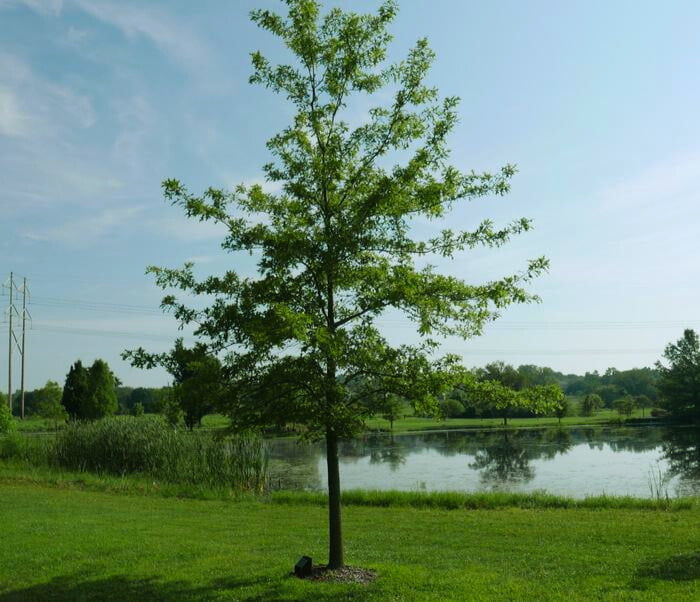
Quercus Nuttallii and Planting: A Comprehensive Guide
Introduction
When it comes to landscaping and enhancing the natural beauty of your surroundings, choosing the right tree species is crucial. Quercus Nuttallii, commonly known as Nuttall Oak, is a remarkable tree species that can bring elegance and shade to your outdoor space. In this comprehensive guide, we will delve into the world of Quercus Nuttallii and explore the best practices for planting and caring for this magnificent tree.
What is Quercus Nuttallii?
Quercus Nuttallii, also known as Pin Oak or Red Oak, is a deciduous tree native to the southeastern United States. It is renowned for its striking red autumn foliage and its ability to thrive in various soil conditions. If you’re considering adding a Nuttall Oak to your landscape, read on to discover how to do it right.
Benefits of Choosing Quercus Nuttallii
Quercus Nuttallii, or Nuttall Oak, offers a myriad of benefits that make it a desirable addition to any outdoor space:
1. Aesthetic Appeal
One of the standout features of Nuttall Oaks is their stunning appearance. During the spring and summer, the tree boasts lush green foliage that provides shade and enhances the overall aesthetics of your yard. As autumn approaches, the leaves turn brilliant shades of red, orange, and burgundy, creating a picturesque fall landscape.
2. Wildlife Attraction
Nuttall Oaks produce acorns, which are a valuable food source for a variety of wildlife, including birds, squirrels, and deer. By planting a Nuttall Oak in your yard, you can create a welcoming habitat for these creatures, promoting biodiversity in your area.
3. Environmental Benefits
These trees also contribute to a healthier environment. Nuttall Oaks absorb carbon dioxide and release oxygen, helping to combat climate change. Their extensive root systems improve soil structure and prevent erosion, making them eco-friendly choices for your property.
Choosing the Right Nuttall Oak
Selecting the right Nuttall Oak for your landscape is crucial to its long-term success. When purchasing a Nuttall Oak sapling, consider the following factors:
1. Local Climate
Ensure that Nuttall Oak is suitable for your region’s climate. Nuttall Oaks are typically hardy in USDA zones 6-9, but local climate variations may affect their growth.
2. Space Availability
Consider the available space in your yard. Nuttall Oaks can grow to be quite large, so plan for sufficient room for the tree to reach its full potential without interference from structures or other trees.
3. Soil Testing
As mentioned earlier, Nuttall Oaks are adaptable to various soil types. However, conducting a soil test can help you determine if any soil amendments are needed to optimize growth.
The Planting Process
1. Gathering Materials
Before planting your Nuttall Oak, gather all the necessary materials, including a shovel, mulch, tree wrap or burlap (for winter protection), and a balanced fertilizer.
2. Digging the Hole
When digging the hole for your Nuttall Oak, be mindful not to make it too deep. Plant the tree at the same depth as it was in its nursery container.
3. Watering and Mulching
After planting, water your Nuttall Oak thoroughly to settle the soil and encourage root establishment. Apply a layer of mulch around the base to conserve moisture and regulate soil temperature.
4. Pruning and Fertilizing
Regularly inspect your Nuttall Oak for dead or diseased branches and prune them as needed. Fertilize the tree according to recommendations to support healthy growth.
Long-Term Care
As your Nuttall Oak matures, continue to provide consistent care:
- Regular Watering: Maintain adequate soil moisture, especially during dry periods.
- Monitoring: Keep an eye on the tree’s overall health, addressing any issues promptly.
- Protect from Extreme Conditions: During winter, protect young Nuttall Oaks from frost by wrapping the trunk.
- Pest and Disease Management: Learn to recognize common pests and diseases and take appropriate action to mitigate them.
In conclusion, Quercus Nuttallii, or Nuttall Oak, is a beautiful and resilient tree species that can enhance the beauty and biodiversity of your outdoor space. By carefully selecting, planting, and maintaining this tree, you can enjoy its many benefits for years to come.
FAQs (Frequently Asked Questions)
- When is the best time to plant a Nuttall Oak? The best time to plant a Nuttall Oak is in the fall or early spring when the tree is dormant.
- How fast does Quercus Nuttallii grow? Nuttall Oaks are considered fast-growing trees and can grow 2 to 3 feet per year under optimal conditions.
- Are Nuttall Oaks prone to any diseases or pests? While generally hardy, Nuttall Oaks can be susceptible to oak wilt and various insect pests. Regular monitoring and maintenance can help prevent these issues.
- Can I plant Nuttall Oaks close to my house? It’s advisable to plant Nuttall Oaks at least 20-30 feet away from buildings and structures to prevent potential root damage.
- Do Nuttall Oaks attract wildlife? Yes, Nuttall Oaks produce acorns that are a valuable food source for wildlife, making them a popular choice for attracting birds and squirrels to your yard.